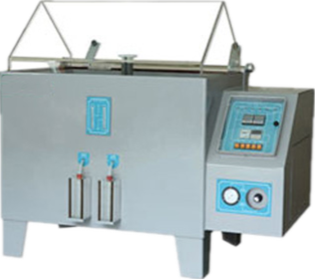
NewsInformation Center
What is salt spray testing for corrosion resistance?
2023/09/08
The corrosion resistance salt spray test is a commonly used environmental test used to evaluate the corrosion resistance of materials, coatings, and surface treatments. It simulates the corrosion conditions in a salt spray environment and evaluates its durability and surface protection performance in a corrosive environment by exposing the sample to a salt spray or salt spray environment.
Salt spray testing is a method of checking the corrosion resistance of coatings and materials used to manufacture products such as fasteners. During salt spray testing, an accelerated corrosive attack is produced in order to better predict how well the coating protects the metal.
Salt spray testing usually follows international standards such as ASTM B117, ISO 9227, etc.
The salt spray test has three types:
Neutral salt spray test (N SS)
Acetic acid salt spray test (AA SS)
Copper accelerated acetic acid salt spray test (CA SS)
Basically, the Salt spray testing procedure is as follows:
1. Prepare the sample: According to the test requirements, make the material or coating to be tested into the appropriate shape and size. Usually plates, membranes, coating samples, etc.
2. Set up test equipment: Salt spray test chamber or salt spray corrosion test chamber is usually used for testing. The test equipment includes a heater, sprayer, sample tray, etc.
3. Prepare the test solution: Mix an appropriate amount of salt-free distilled water and table salt (sodium chloride) according to the specified ratio to ensure that the concentration of the salt water meets the test standard.
4. Place the sample: Place the prepared sample on the sample tray of the testing equipment, ensuring that the sample surface is exposed to the salt spray environment.
5. Start the test: Spray the salt water mist on the surface of the sample through heating and a sprayer. Spraying time and spraying interval are determined according to test standards, usually ranging from several hours to thousands of hours.
6. Evaluate the sample: After the test is completed, take out the sample and conduct quantitative or qualitative evaluations such as appearance inspection, weight loss, oxidation degree, corrosion area, etc.
Through the corrosion resistance salt spray test, the corrosion performance of materials and coatings in salt spray environments can be evaluated to understand their durability in highly corrosive scenarios such as marine environments and industrial atmospheric environments. This helps guide material selection, surface treatment and use of protective measures, and provides a basis for quality control and reliability analysis.
Previous: How do you test for burning cotton and linen?
N e x t : Analysis of experimental operation steps of zipper fatigue test




